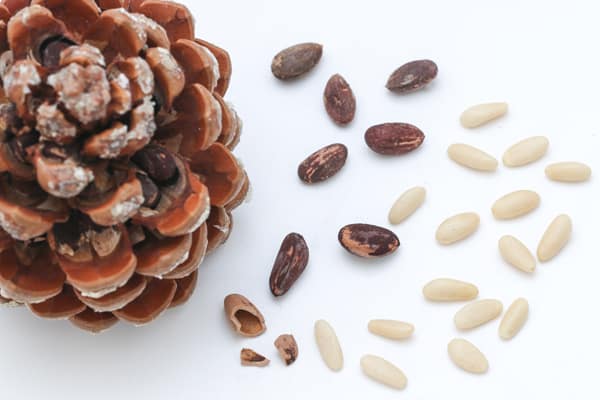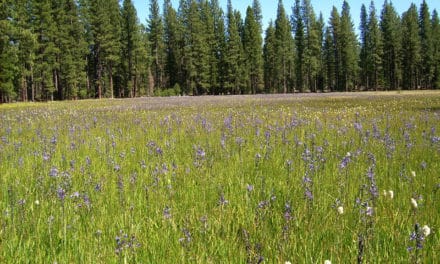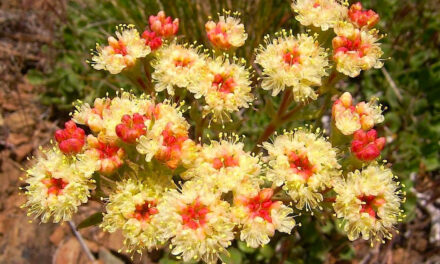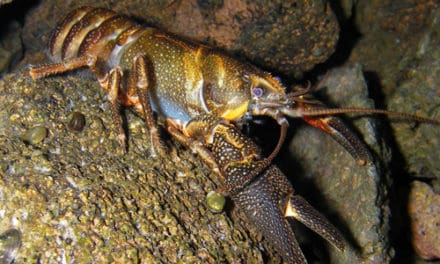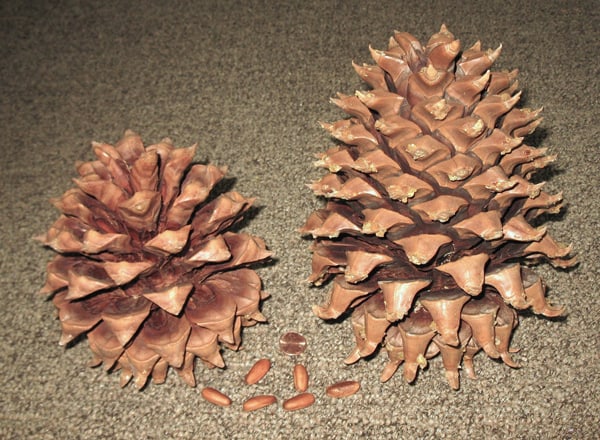
By Jim Moore
When making a list of possible Food from the Wild stories I did not add pine nuts to the list since I had the false notion that edible pine nuts were limited to the Pinyon pines, which grow in the Southwest regions beyond the Mountain Valley Living realm. This err in my understanding was set straight when I received an email, from our MVL general manager Melissa, providing a link to an interesting article on the common pine nut tree, the Foothill Pine.
A little online research also brought to light additional edible large nut pine species: the Sugar Pine, the Big Cone Pine, the rare Torrey Pine, and several Pinyon species; and also the Stone Pines of Europe,
and East Asian pine nut species. What surprised me were the astronomical prices: up to $40.00 per pound for top-of-the-line shelled Nevada Pinyon Pine nuts! No big worry though, cheaper East Asian pine nuts, which make up 80% of the US market, can be purchased for only $21.00 per pound! Or, if you do not mind shelling each little nut yourself then the price is only $11.00 per pound (includes the weight of the shells); but once shelled, you will only have 6-8 ounces of pine nuts! These are actually reasonable prices; and are directly related to the time consuming, labor intensive efforts needed to get the pine nuts, from mostly wild picked pine cones, to the store all packaged nice and pretty.
For those folks who do not want to pay that much there is the adventure of collecting your own pine nuts (a great thing to do with your kids), and in Northern California the only real option is the Foothill Pine.
The Foothill Pine, species Pinus sabiniana, also called the Gray Pine, grows abundantly within the foothills that surround California’s great central valley. Most local folks who travel the highways that link our mountain-valley domains are familiar with this pine tree and the large cantaloupe-sized pine cones that hang on the branches and litter the sides of the highways. I have gathered a few of these pine cones from the road side and have found only a few large seeds still in the cones. To get the tastiest bug free nuts requires picking the cones from the trees before they open and shed their seeds. The months of September and October are the best time of the year to do this.
First, you will need to do a little online investigation as to where to go to get Foothill pine cones: are permissions required; good road access; etc. Once a location is found with a fair number of Foothill pines that also have a fair number of unopened cones on the tree you can begin trying to figure out how to harvest the cones. The native tribes just sent their young men up the trees and they just twisted them off or used long poles with hooks on the end to yank the cones off. My advice is do not climb the trees.
You will need to store them in a warm airy location until the cones begin to open. Then put them in a large sturdy bag and slam-bang the bag on a hard surface, like concrete, to dislodge the seeds from the cones. Some of the seeds may need to be extracted with a pointy implement of some sort. These cones are big, and you can expect 20 to 40 or more seeds per cone, depending on cone size. Unlike the thin-shelled Pinyon pine seeds, the inch long seeds of Foothill pines have thick hard shells. You will need a hammer or nutcracker to get the pine nuts out of the shells, just be careful not to crush the nut inside.
The whole process is quite time consuming, and is the main reason Foothill pine nuts are not commercially profitable. But once you have your fresh Foothill pine nuts you will surely believe them to be the tastiest of all. As for me, the next time I want pine nuts, I will fork out the forty!

